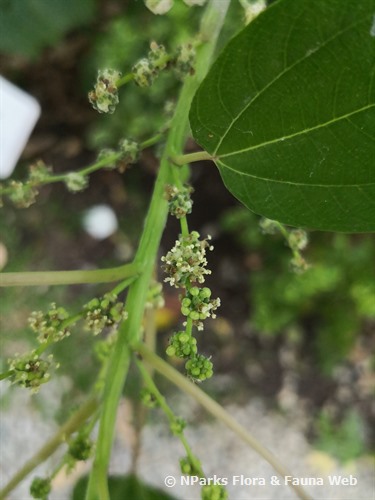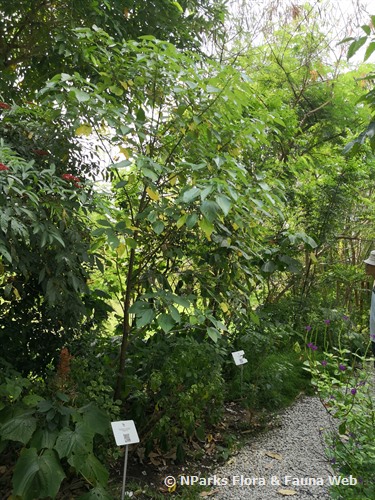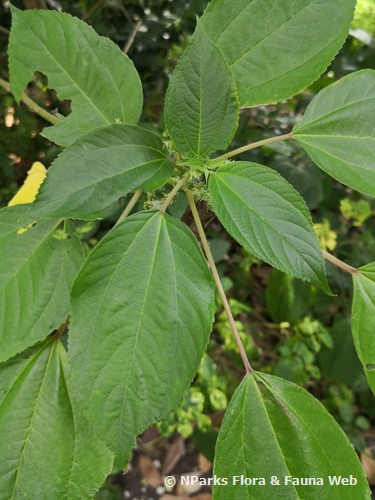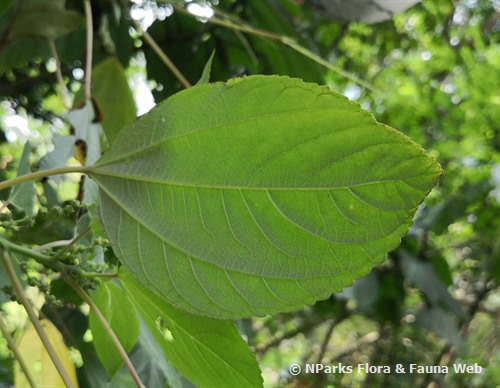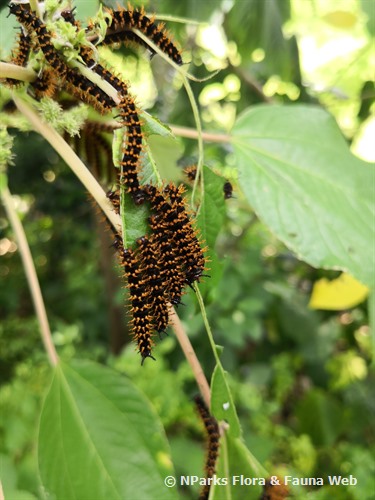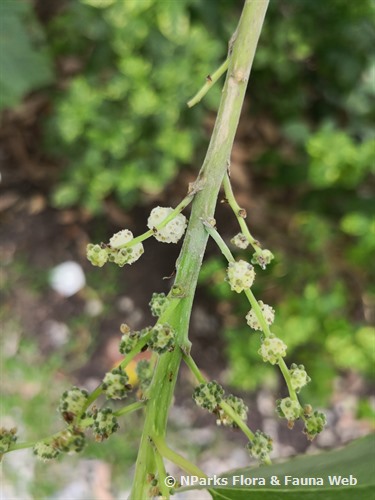
Name
Classifications and Characteristics
| Plant Division | Angiosperms (Flowering Seed Plants) |
|---|---|
| Plant Growth Form | Tree, Shrub |
Biogeography
| Native Distribution | Australia |
|---|---|
| Native Habitat | Shoreline |
| Preferred Climate Zone | Sub-Tropical / Monsoonal |
| Local Conservation Status | Cryptogenic |
Description and Ethnobotany
| Growth Form | Large shrub or small tree up to 6m. |
|---|---|
| Foliage | Leaves are deep green and elliptical. The lower leaf surface and the petiole are densely covered in short, white hairs that give them a silvery sheen. There are a pair of triangular stipules (leafy tissue) located at the base of the petiole. |
| Flowers | White, male and female flowers occur on separate plants in round clusters. |
| Fruit | The white, mulberry-like fruits are soft and sweet (up to 6 mm wide). Although the fruits are edible, they are not widely eaten. |
| Habitat | It occurs in rainforests along the coast of Australia (from Lismore to North Queensland). |
| Associated Fauna | A wide variety of birds have been observed to feed on the fruits including bulbuls, starlings, orioles and hornbills. Squirrels and monkeys also eat the fruits. |
| Etymology | The specific epithet 'argenteus' means silver-coloured in Latin and refers to the silvery leaf undersurface. |
| Ethnobotanical Uses | Edible Plant Parts : Edible Fruits Others: Australian aborigines use the bark fibres to make fishing nets. |
Fauna, Pollination and Dispersal
| Fauna Pollination Dispersal Associated Fauna | Bird-Attracting, Butterfly Host Plant |
|---|
Plant Care and Propagation
| Light Preference | Semi-Shade |
|---|---|
| Water Preference | Moderate Water |
| Plant Growth Rate | Fast to Moderate |
| Propagation Method | Seed, Stem Cutting |
Floral (Angiosperm)
| Flower & Plant Sexuality | Unisexual Flowers |
| Flower Colour(s) | White |
|---|
Fruit, Seed and Spore
| Mature Fruit Colour(s) | White |
|---|---|
| Mature Fruit Texture(s) | Bumpy / Tuberculate |
Image Repository
Others
| Master ID | 33804 |
|---|---|
| Species ID | 8220 |
| Flora Disclaimer | The information in this website has been compiled from reliable sources, such as reference works on medicinal plants. It is not a substitute for medical advice or treatment and NParks does not purport to provide any medical advice. Readers should always consult his/her physician before using or consuming a plant for medicinal purposes. |

